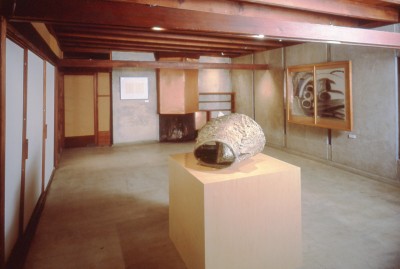Today, the question of the correct and appropriate way to deal with auratic architectural icons—of which Schindler’s house and studio on Kings Road in West Hollywood is undoubtedly an example—is highly topical, not least since the reopening of, for example, Adolf Loos’s Villa Müller in Prague and Mies van der Rohe’s Villa Tugendhat in Brno. There are numerous different approaches to this complex topic.
The MAK Center has committed itself to maintaining the Schindler House, which constitutes a revolutionary manifesto for the modern Californian lifestyle, as a historical residence and as a living exhibit. At the heart of the activities at the MAK Center, which was founded in 1994 by Peter Noever, are new trends in art and architecture that pursue interdisciplinary developments and conceptually experimental methods. Its multifaceted approach—including an artists and architects-in-residence program, exhibitions, lectures, concerts, and performances—goes far beyond the imagination and activities of a traditional museum; the MAK Center seeks to continue Schindler’s aspirations for scientific analysis, artistic experiments, and radical innovation, as well as to investigate and further develop the relevance of Schindler’s creative work for the present. Furthermore, establishing a discourse around and in accordance with the wishes of Schindler takes center stage. So-called MAK Salons build on the house’s original role as a meeting point for the intellectual avant-garde, thereby following in the footsteps of Rudolph and Pauline Schindler, who surrounded themselves with intellectuals, artists, musicians, and people from the theater.
The aim of the MAK Center has always been to facilitate a laboratory for contemporary art and architecture, to question and test the limits between different disciplines, and to use Schindler’s work as a means to foster new ideas and new thoughts about essential contemporary issues. With this lived mission of skillfully combining past and present, the MAK Center fulfills a crucial educational mandate in modern society and offers its visitors opportunities that go far beyond those of a conventional historic house museum.
Realizing and executing a program of this kind demands great sensitivity and a particular approach to presenting exhibitions. The interplay of architecture, display, and exhibit presents an unusual challenge for artists and curators—both in terms of concept and design—due to the obvious restrictions of the Schindler House. The aim of generating ideas concerning new didactics and alternative forms of reception and presentation, as well as openness to the outside, is to experimentally reinterpret and transform the overall concept of the existing interior and exterior. With every exhibition, every artistic intervention—such as Schindler Lab—the trick is to arouse interest in what already exists, to enable alternative and enhanced views of the “substance,” and to convey new information through the respective interplay, which enables the audience to reflect on new insights and aesthetic experiences.
Thanks to its wide-ranging program, the MAK Center facilitates other, additional levels of mediation, makes it possible for visitors to immerse themselves in another world, and shows them the spirit of Rudolph Schindler and his architecture—which capture one’s imagination as if by magic—even without the furnishings in the house being complete.

Installation View. Part of Frederick J. Kiesler, Endless Space at the MAK Center for Art and Architecture at the Schindler House. December 6, 2000 – February 25, 2001.